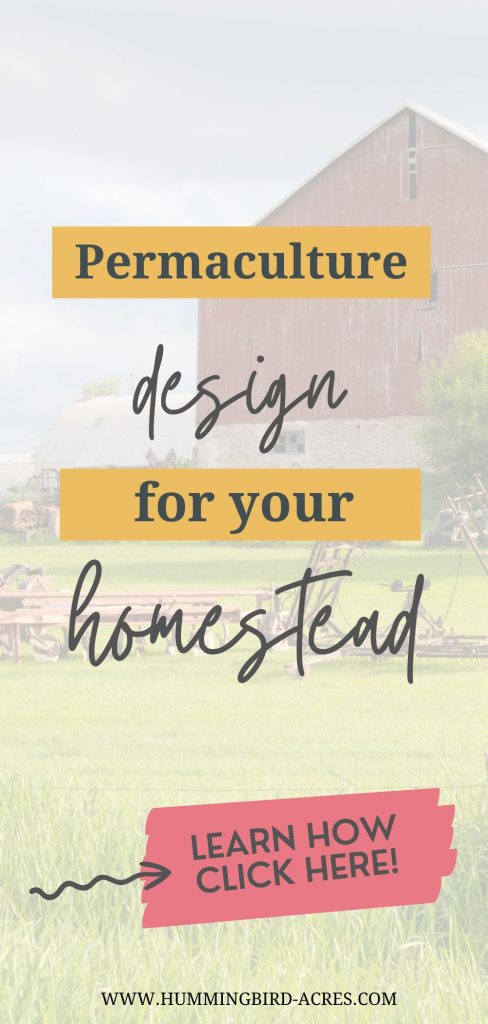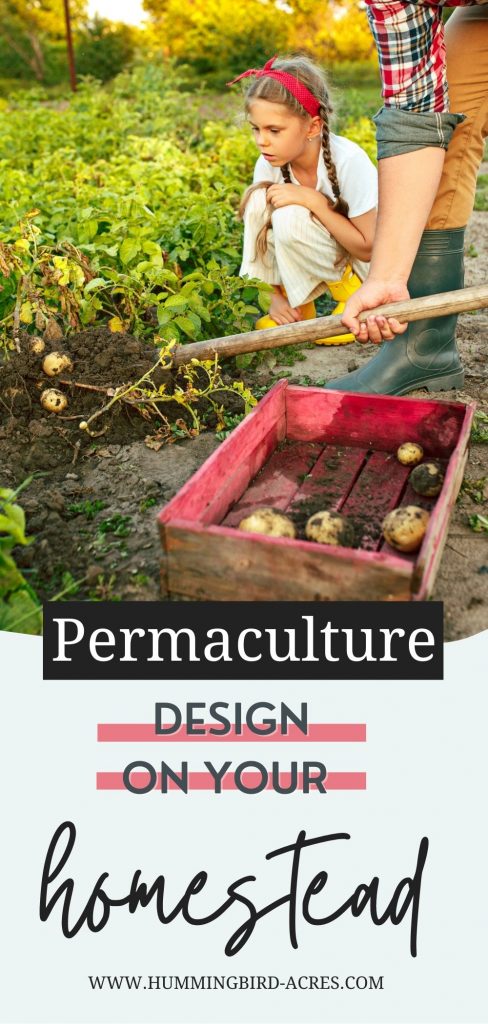Permaculture Design and How to use it on Your Homestead
Permaculture is a way of living that mimics the patterns and relationships found in nature. It’s an approach to designing human settlements and agricultural systems that are sustainable, efficient, and harmonious with the earth. If you’re interested in learning more about permaculture design, or you’re just starting out on your own permaculture journey, this guide is for you!
In it, we’ll cover the basics of what permaculture is, how to get started, and some of the benefits of practicing permaculture.
Disclosure: Some of the links below are affiliate links, meaning, at no additional cost to you, I will earn a commission if you click through and make a purchase.
Step 1: Take A Step Back and Look At The Big Picture
When it comes to designing a new permaculture system, many people rush into things without first taking the time to observe and learn from the existing natural systems in their area.
However, this is not thepermaculture way. According to the principles of “observe and interact” and “design from patterns to details,” we should take some time to carefully study the local ecosystem before we start making any changes.
Only by understanding the intricate web of relationships between the plants, animals, and microorganisms in our area can we hope to create a permaculture system that is truly sustainable in the long term.
If you’re just moving onto a new property, it might be worth waiting a full year to see how your property behaves through all four seasons before you start to make any changes.
So next time you’re feeling tempted to just jump into things, remember: good permaculture design starts with observation and learning from nature.
Step 2: Start Collecting Energy and Resources
Before you even start planting in your new backyard permaculture garden, there are a few things you can do to set yourself up for success.
One of the most important is to set up a composter. This will help you minimize your waste and create nutrient-rich soil for your plants.
You can start collecting compostable materials from your kitchen, such as fruit and vegetable scraps, coffee grounds, and eggshells.
Once you have a good amount of material, build or buy a composter, and be sure to turn it regularly so that the materials breaks down evenly.
Want to know more about composting and what composter is right for you check out our Composting Page.
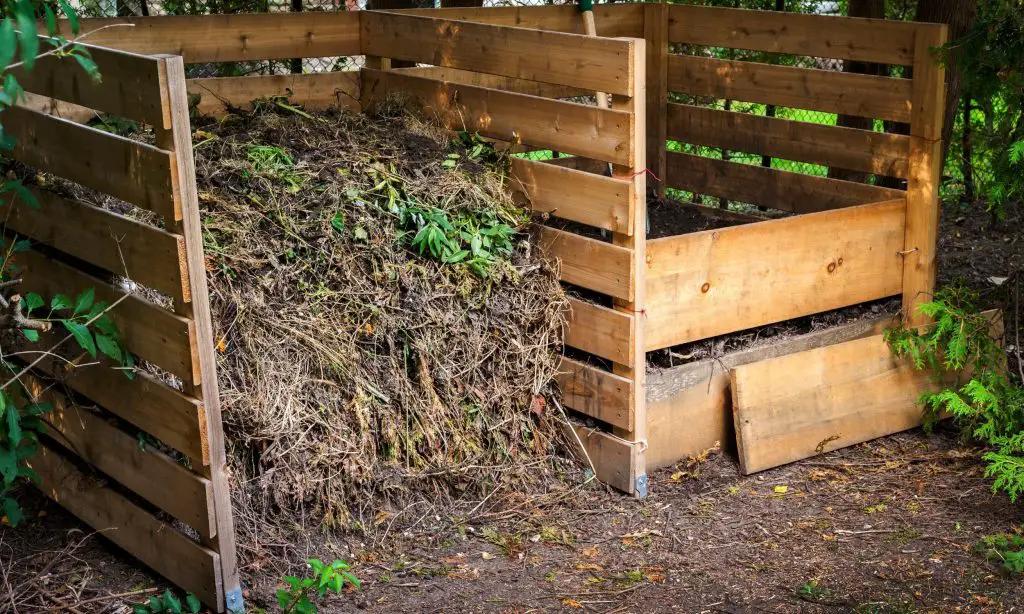
Step 3: Choose Your Plants
When you’re creating your backyard permaculture design, one of the big decisions you’ll need to make is which plants to include. You’ll want to keep the principle of using and valuing diversity in mind as you select your plants.
Try to choose a wide variety of different types of plants that will work well together.
Where possible, pick native plants that are best suited to your area. This will help ensure that your plants are able to thrive in your climate and soil conditions.
Step 4: Make Your Job Easier
One of the best things about permaculture is that it can help to reduce the amount of time you spend on yard work. That’s because one of the main principles of permaculture is self-regulation, which means creating systems that can take care of themselves with minimal impact.
For example, choose plants that are drought-tolerant and don’t require a lot of watering. Or select native plants that don’t need soil amendments or extra protection over the winter months.
And don’t feel like you have to do something a certain way just because that’s how all your neighbors are doing it. Designing a permaculture backyard is all about creating a system that works for you instead of against you.
So if you’re looking for a way to reduce your workload, permaculture is definitely worth considering.
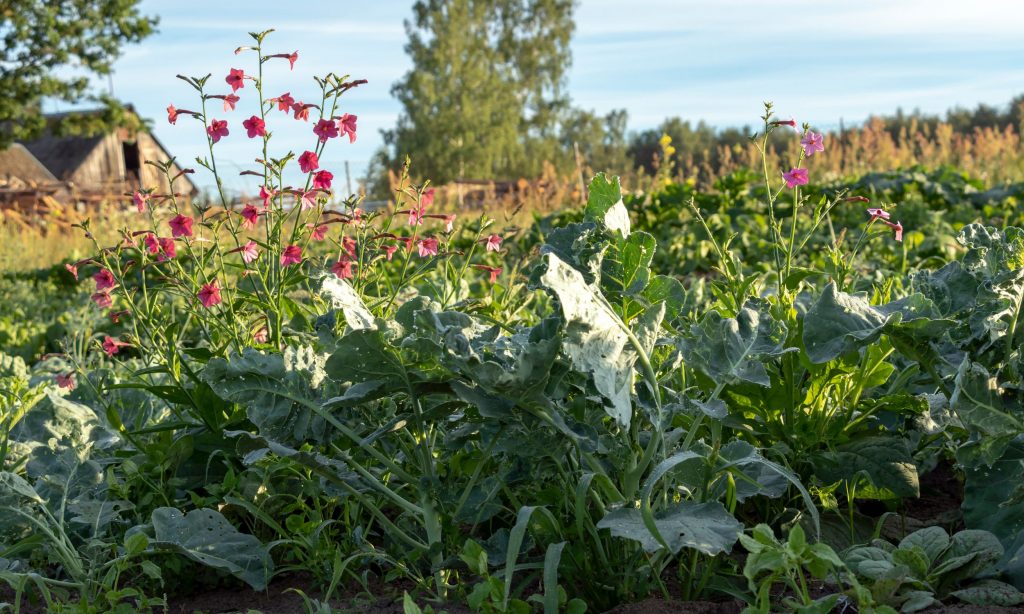
Step 5: Keep What Works and Change The Rest
After you’ve had your permaculture backyard for a year, chances are you’ll notice there are some parts of your design that are working exactly as intended. Others may not be performing in the way that you expect.
That’s when it’s time to follow the principle of responding to change. Focus on the parts of your design that seem to be thriving and build upon those.
At the same time, be open to changing things that aren’t working as you expected. For example, if your initial plan was to grow crops in one half of your backyard but that area isn’t getting enough sunlight, consider planting a shade-loving garden instead.
Likewise, if you find that your compost pile isn’t heating up as quickly as you’d like, add more green waste to the mix or build a larger bin.
By paying attention to how your design is performing and making adjustments as needed, you can ensure that your permaculture backyard is always productive and sustainable.
Step 6: Think Long-Term
People often want to see quick results when they start gardening, but it’s important to remember the principle of using small and slow solutions. This means starting with a small area and gradually adding to it over time.
Permaculture gardens can be very productive, but they often take a while to establish. This is because they are built around complex systems that need time to develop. But patience is important in permaculture, as rushing things can often lead to more problems in the long run.
So if you’re tempted to go for a quick fix, remember to take things slow and steady for the best chance of success.
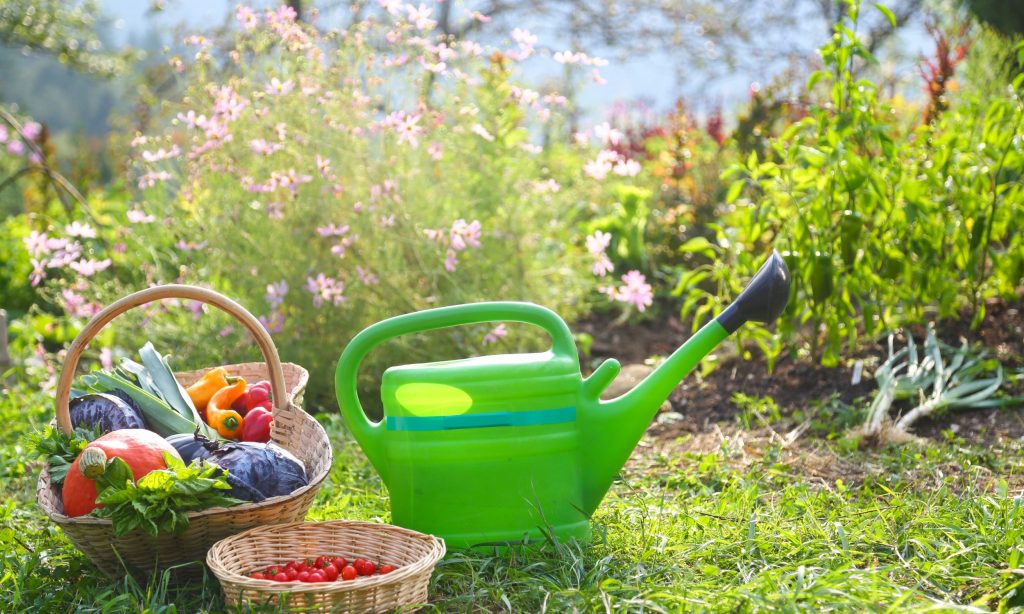
Step 7: Enjoy The Bounty
Remember that one of the principles you followed when designing your permaculture garden was to obtain a yield. Be sure to take advantage of the fruits of your labor.
Getting lots of fresh vegetables and fruit to harvest is one of the biggest rewards you’ll get from all the work you put into designing your permaculture backyard.
In addition to enjoying them yourself, you can share your surplus with family, friends, and neighbors. They’ll be impressed with both your bounty and your gardening skills.
If you’ve never done it before, preserving foods from your harvest is a fun way to enjoy them long after the growing season is over. There are many different methods to choose from, including canning, freezing, drying, and pickling.
If you are ready to jump into the world of home preserving check out our section on Preserving the Harvest.
Backyard Permaculture Tips to Get Your Started
Here are a few additional thoughts to keep in mind when designing your permaculture backyard:
- Don’t forget to maximize vertical space by using trellises or planting a milk crate garden. Green Stalks are a great way of doing this. Click on the link (HERE), enter your email and get $10 off.
- Set up composters near your garden to make it easier to transport materials back and forth.
- Use whatever materials you’ve got on hand. Spare pieces of wood, or even things like cans and bottles can be upcycled into planters or garden borders.
- Empty toilet paper rolls or old newspapers can be used to create biodegradable planting pots for seedlings.
- Don’t take on more than you can handle! Start by converting a portion of your yard this year instead of trying to do the entire thing at once. Then you can slowly expand upon it.
- Plant things like salad greens or herbs that you’ll use on a daily basis close to your house. Put staple vegetables that don’t need daily attention further back, and fruit trees furthest of all.
- Use grass clippings or leaves from last fall as a mulch to protect the soil. It will help to keep in moisture and shade out weeds.
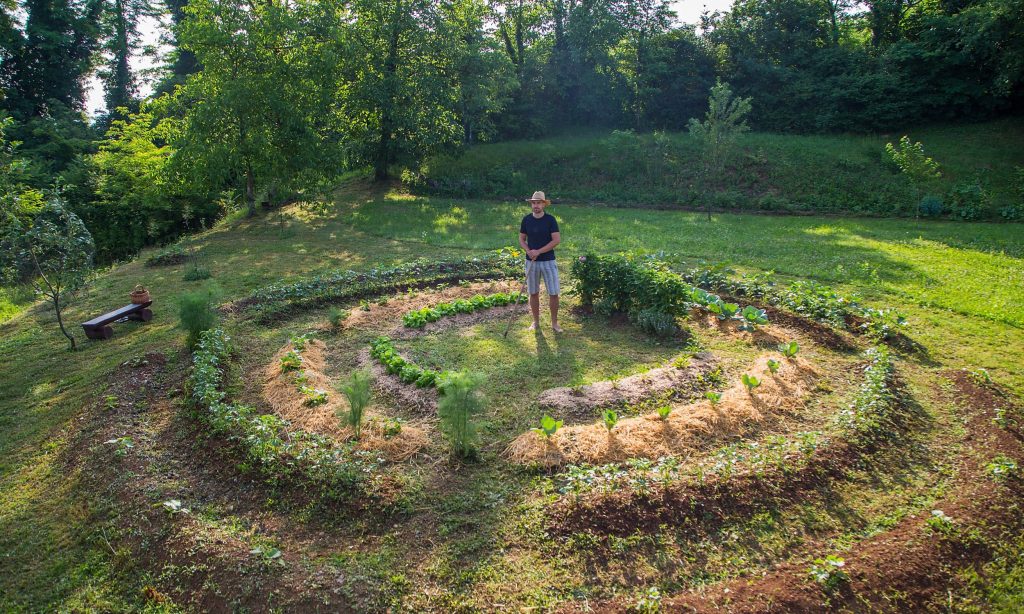
Applying permaculture design to your homestead can help you create a more sustainable and efficient property. By following the principles of permaculture, you can create systems that work together to benefit the environment and yourself.
If you’re interested in learning more about permaculture design, there are many resources available online and in print. You can also find workshops and courses offered in your area.
If you are just getting started The Suburban Micro-Farm: Modern Solutions for Busy People is a great book!!
With a little bit of effort, you can apply permaculture design principles to your homestead and make it a more enjoyable and Eco-friendly place to live.
You may also enjoy these related articles:
- Planting a Permaculture Orchard
- Tips for Buying a Homestead
- Beginners Guide to Permaculture | What is Permaculture
Did you enjoy this article? Want to hear more? Stay in touch! Sign up below to receive weekly tips and inspiration for your homestead.
Pin for Later
